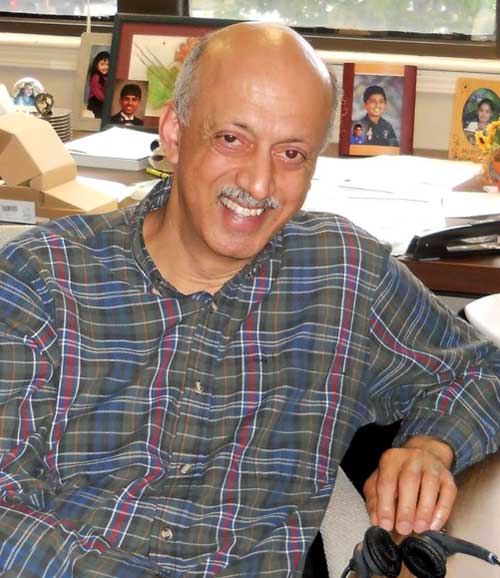October 1, 2011
By Jim Romeo
Finite element analysis (FEA) products are not always developed and built to suit a particular industry. However, Bentley Systems recently expanded its portfolio of products and companies by acquiring SACS’ suite of applications that had been developed specifically for the offshore energy and engineering industry.
To find out more about these products, DE spoke with Parvinder Jhita, Bentley Systems product manager, SACS product line, based in Kenner, LA:
DE: How does the SACS suite work?
 Parvinder Jhita, Bentlry Systems |
PJ: SACS is an integrated finite element structural analysis suite of applications that uniquely provides for the design, fabrication, installation, operations and maintenance of offshore structures. SACS provides comprehensive lifecycle applications for the analysis and design of new and existing fixed offshore structures for the oil, gas and wind energy markets. The comprehensive lifecycle applications include non-linear analysis for blast, ship impact and pushover loads; fatigue life evaluation; and installation loads.
DE: How does SACS proactively address safety issues?
PJ: SACS offers an efficient and easy way of performing different types of analysis over the lifecycle of an offshore structure. For example, our Collapse and Dynamic Response modules, which are closely coupled together, allow the user to quickly analyze and visually simulate the damage to a jacket structure from accidental events in real-time, leading to a safer design.
Another good example is our Wave Response module, which allows the determination of dynamic effects on a structure due to cyclic loading from waves, wind and turbine mechanical time/history forces. It is fully coupled with the Fatigue module, enabling the user to effortlessly conduct a fatigue design of offshore platforms for the oil, gas and wind industry. Our Interactive Fatigue module allows the user to redesign any joint on the fly, by interactively changing the structural data and fatigue parameters—saving many hours of analysis and design time to reach a solution.
DE: What features about your product would you say are most appealing to end-users?
PJ: Three key features include built-in standard platform templates that enable fast, detailed creation of jacket and topside structures; front-end dashboard to simplify and effortlessly design for the many complex loading scenarios; and the ability to seamlessly integrate joint finite element meshes into the overall structural analytical model for detailed collapse design.
DE: Do you plan to add to your application and publishing program in the near future?
PJ: Features of upcoming releases will be focused on improving productivity and providing safer platform designs. These include enhanced visualization of analysis results, additional European standards, and a new, non-linear collapse module with enhanced large deflection capability and optimization of fatigue calculations to dramatically reduce analysis times. Our major focus, however, is to integrate SACS with other Bentley structural and modeling products using Bentley’s integrated structural methodology (ISM).
DE: How would you characterize the return on investment for SACS?
PJ: SACS is available in packages that have different low- to high-end capabilities, depending on the requirements and scale of the project. Users who acquire SACS stay highly competitive, because SACS is the most widely used software for the design of offshore platforms.
There is significant economic benefit to using this software: SACS is geared toward the analysis and design of offshore platforms. It has specific tools for this purpose and, as a result, there is substantial return on investment in terms of time-savings and reduced cost.
DE: In your view, what are the greatest challenges facing design engineers of all disciplines today, and how do you integrate such concern into your product lines?
PJ: Design engineers in the infrastructure community have a shared responsibility to improve the lives of people around the globe by sustaining the world’s infrastructure. Quickly developing economies, such as those of Brazil, Russia, India and China, are creating unprecedented demands for energy—as well as for food, developed land, water, materials and infrastructure. SACS enables the safe design of offshore platforms to meet the rapidly growing demand for oil and gas energy, and will continue to play an increasing role in the growing generation of energy from wind farms.
Jim Romeo is based in Chesapeake, VA. Contact him via [email protected].
For More Info
Subscribe to our FREE magazine, FREE email newsletters or both!
About the Author
Jim Romeo is a freelance writer based in Chesapeake, VA. Send e-mail about this article to [email protected].
Follow DE





